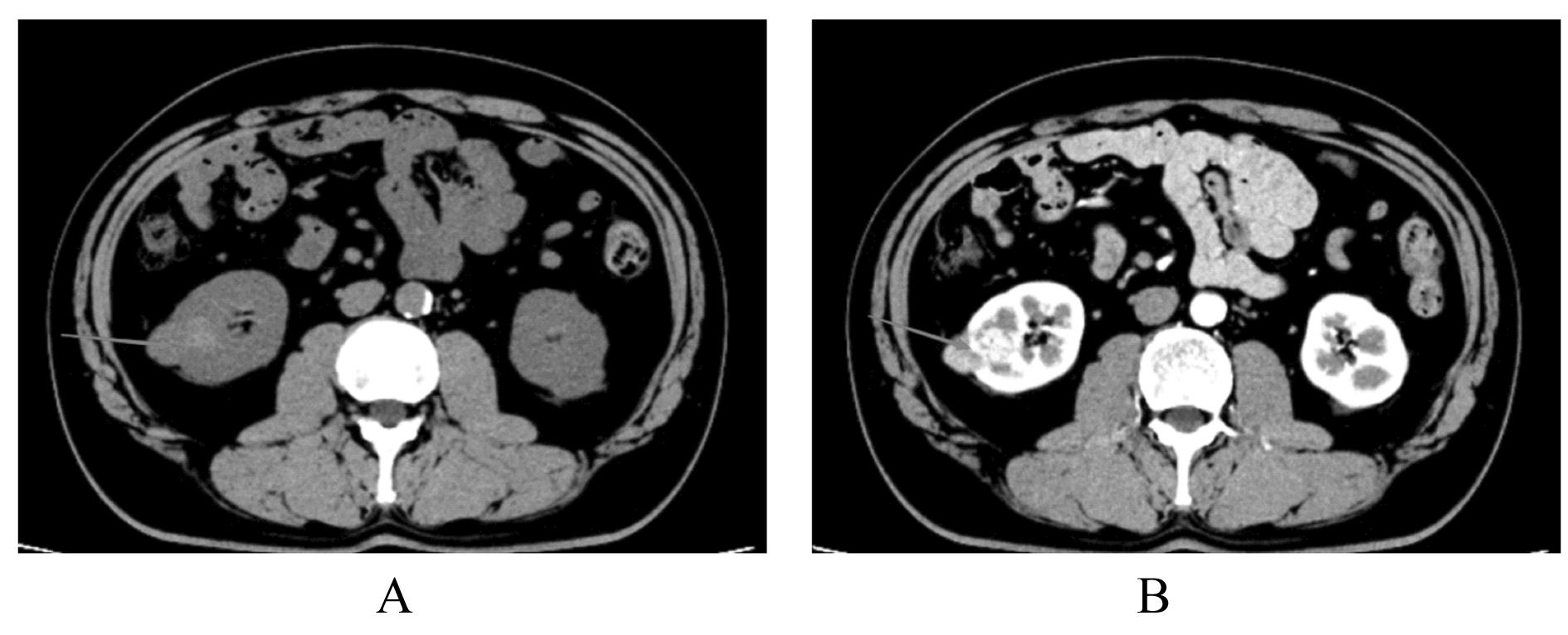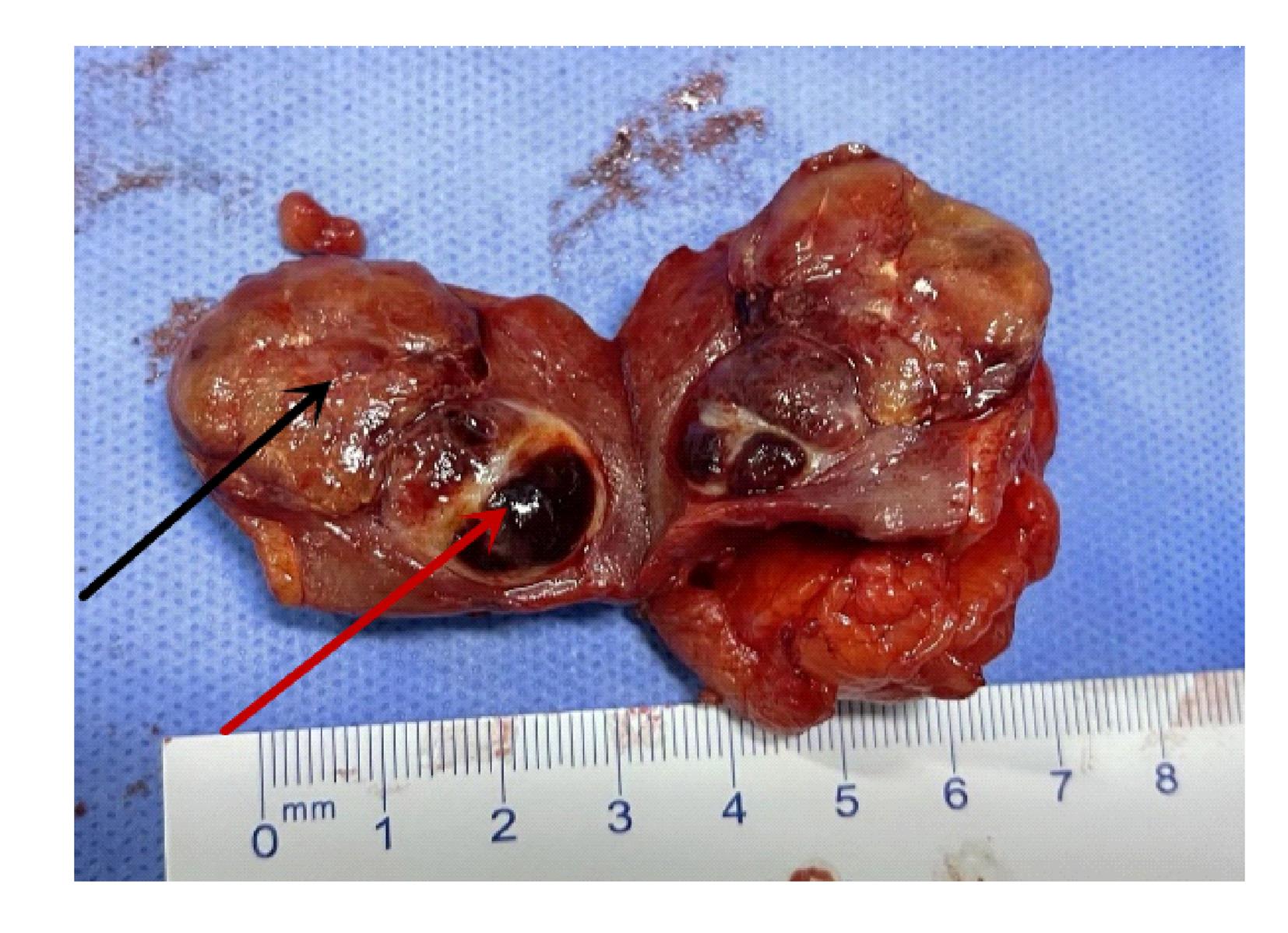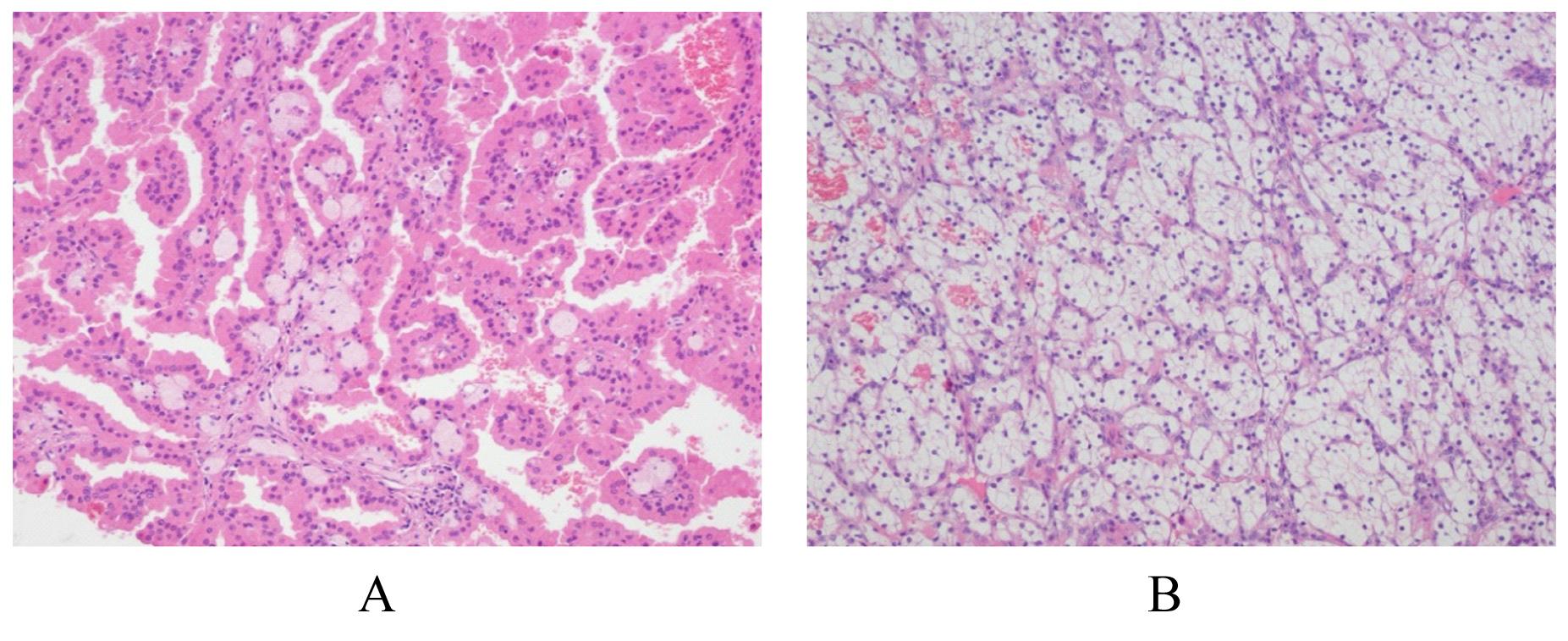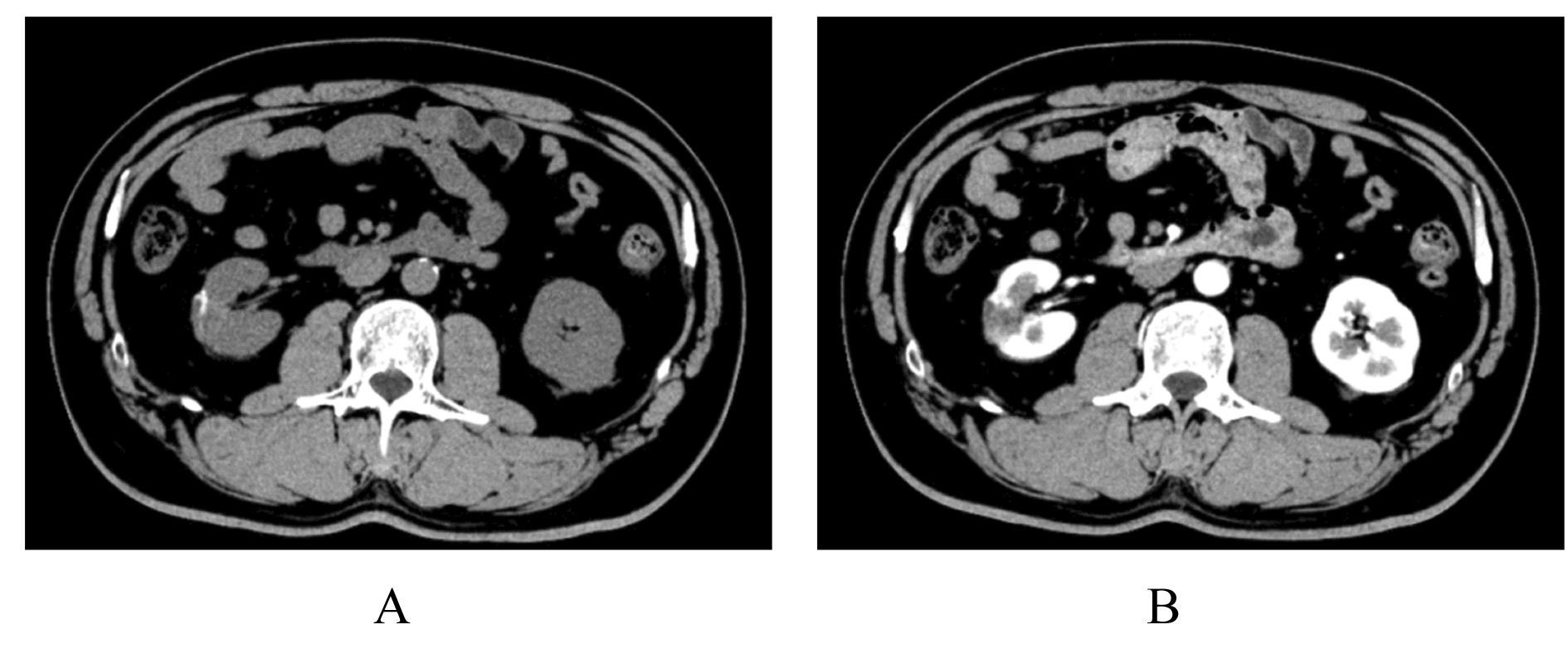| 1 |
韩金花, 丁 霞, 赵 霞, 等. 肾透明细胞癌与肾嗜酸细胞腺瘤的CT鉴别诊断[J]. 医学影像学杂志, 2022, 32(1): 107-110.
|
| 2 |
MOCH H, CUBILLA A L, HUMPHREY P A, et al. The 2016 WHO classification of tumours of the urinary system and male genital organs-part A: renal, penile, and testicular tumours[J]. Eur Urol, 2016, 70(1): 93-105.
|
| 3 |
WARREN A Y, HARRISON D. WHO/ISUP classification, grading and pathological staging of renal cell carcinoma: standards and controversies[J]. World J Urol, 2018, 36(12): 1913-1926.
|
| 4 |
LEFÈVRE M, COUTURIER J, SIBONY M, et al. Adult papillary renal tumor with oncocytic cells: clinicopathologic, immunohistochemical, and cytogenetic features of 10 cases[J]. Am J Surg Pathol, 2005, 29(12): 1576-1581.
|
| 5 |
SRIGLEY J R, DELAHUNT B. Uncommon and recently described renal carcinomas[J]. Mod Pathol, 2009, 22(): S2-S23.
|
| 6 |
SRIGLEY J R, DELAHUNT B, EBLE J N, et al. The international society of urological pathology (ISUP) Vancouver classification of renal neoplasia[J]. Am J Surg Pathol, 2013, 37(10): 1469-1489.
|
| 7 |
BRATSLAVSKY G, LINEHAN W M. Long-term management of bilateral, multifocal, recurrent renal carcinoma[J]. Nat Rev Urol, 2010, 7(5): 267-275.
|
| 8 |
LALL C, HOUSHYAR R, LANDMAN J, et al. Renal collision and composite tumors: imaging and pathophysiology[J]. Urology, 2015, 86(6): 1159-1164.
|
| 9 |
张 栋, 何 群, 席志军, 等. 同侧肾脏同时发生透明细胞型与乳头状肾细胞癌[J]. 现代泌尿生殖肿瘤杂志, 2014, 6(1): 11-14.
|
| 10 |
CHEVARIE-DAVIS M, RIAZALHOSSEINI Y, ARSENEAULT M, et al. The morphologic and immunohistochemical spectrum of papillary renal cell carcinoma: study including 132 cases with pure type 1 and type 2 morphology as well as tumors with overlapping features[J].Am J Surg Pathol,2014,38(7): 887-894.
|
| 11 |
PIGNOT G, ELIE C, CONQUY S, et al. Survival analysis of 130 patients with papillary renal cell carcinoma: prognostic utility of type 1 and type 2 subclassification[J]. Urology, 2007, 69(2): 230-235.
|
| 12 |
HES O, BRUNELLI M, MICHAL M, et al. Oncocytic papillary renal cell carcinoma: a clinicopathologic, immunohistochemical, ultrastructural, and interphase cytogenetic study of 12 cases[J]. Ann Diagn Pathol, 2006, 10(3): 133-139.
|
| 13 |
HAN G Y, YU W J, CHU J, et al. Oncocytic papillary renal cell carcinoma: a clinicopathological and genetic analysis and indolent clinical course in 14 cases[J]. Pathol Res Pract, 2017, 213(1): 1-6.
|
| 14 |
XIA Q Y, RAO Q, SHEN Q, et al. Oncocytic papillary renal cell carcinoma: a clinicopathological study emphasizing distinct morphology, extended immunohistochemical profile and cytogenetic features[J]. Int J Clin Exp Pathol, 2013, 6(7): 1392-1399.
|
| 15 |
PARK B H, RO J Y, PARK W S, et al. Oncocytic papillary renal cell carcinoma with inverted nuclear pattern: distinct subtype with an indolent clinical course[J]. Pathol Int, 2009, 59(3): 137-146.
|
| 16 |
粘烨琦, 王荫槐, 易 路, 等. 嗜酸性乳头状肾细胞癌1例报告并文献复习[J]. 临床泌尿外科杂志, 2013, 28(10): 764-765, 768.
|
| 17 |
MATSUOKA T, ICHIKAWA C, FUKUNAGA A, et al. Two cases of oncocytic papillary renal cell carcinoma[J]. Hinyokika Kiyo, 2016, 62(4): 187-191.
|
| 18 |
李丹慧, 刘 强, 方建晨. 嗜酸细胞性乳头状肾细胞癌7例临床病理分析[J]. 临床与实验病理学杂志, 2020, 36(10): 1165-1169.
|
| 19 |
牛 肖, 江 滕, 王 超, 等. 嗜酸细胞性乳头状肾细胞癌2例并文献复习[J]. 临床与实验病理学杂志, 2019, 35(6): 714-717.
|
| 20 |
宋腾腾, 蒋艳霞, 丁立明, 等. 嗜酸细胞性乳头状肾细胞癌的临床病理观察(附2例报告)[J]. 齐鲁医学杂志, 2012, 27(1): 22-24.
|
| 21 |
夏 燕, 胡怀远, 封 扬, 等. 嗜酸细胞乳头状肾细胞癌3例报道并文献复习[J]. 蚌埠医学院学报, 2016, 41(4): 458-461.
|
| 22 |
OKADA A, SASAKI S, FUJIYOSHI Y, et al. A case of oncocytic papillary renal cell carcinoma[J]. Int J Urol, 2009, 16(9): 765-767.
|
| 23 |
耿建祥, 徐文华, 张鸿莺, 等. 嗜酸细胞性乳头状肾细胞癌1例[J]. 诊断病理学杂志, 2004, 11(4): 282.
|
| 24 |
张 伟, 李玉军, 于文娟, 等. 具有实体结构的嗜酸细胞性乳头状肾细胞癌3例临床病理分析[J]. 诊断病理学杂志, 2011, 18(2): 102-105
|
| 25 |
张卫民, 何廉波. 肾癌治疗的研究进展[J]. 河北医学, 2009, 15(9): 1122-1123
|
| 26 |
TSE G, CHOW D S, HSU M, et al. Multidetector computed tomographic features of oncocytic papillary renal cell carcinoma, a new subtype[J]. J Comput Assist Tomogr, 2010, 34(3): 380-384.
|
| 27 |
马建辉, 郑 闪, 吕 宁, 等. 2004年WHO肾细胞癌的病理分类和诊断标准[J]. 现代泌尿外科杂志, 2008, 13(1): 65-69.
|
| 28 |
王龙胜. 嗜酸细胞乳头状肾细胞癌MRI诊断—2021年读片窗(11)[J]. 安徽医学, 2021, 42(11): 1328-1329.
|
| 29 |
TRUONG L D, SHEN S S. Immunohistochemical diagnosis of renal neoplasms[J]. Arch Pathol Lab Med, 2011, 135(1): 92-109.
|
| 30 |
ZORN K C, GONG E M, ORVIETO M A, et al. Comparison of laparoscopic radical and partial nephrectomy: effects on long-term serum creatinine[J]. Urology, 2007, 69(6): 1035-1040.
|
| 31 |
范春玲, 刘永哲. 腹腔镜下肾部分切除术后急性肾损伤的危险因素及其预测价值[J]. 解放军医学杂志, 2022, 47(5): 493-499.
|
| 32 |
TANNIR N M, PLIMACK E, NG C, et al. A phase 2 trial of sunitinib in patients with advanced non-clear cell renal cell carcinoma[J]. Eur Urol, 2012, 62(6): 1013-1019.
|
 )
)













